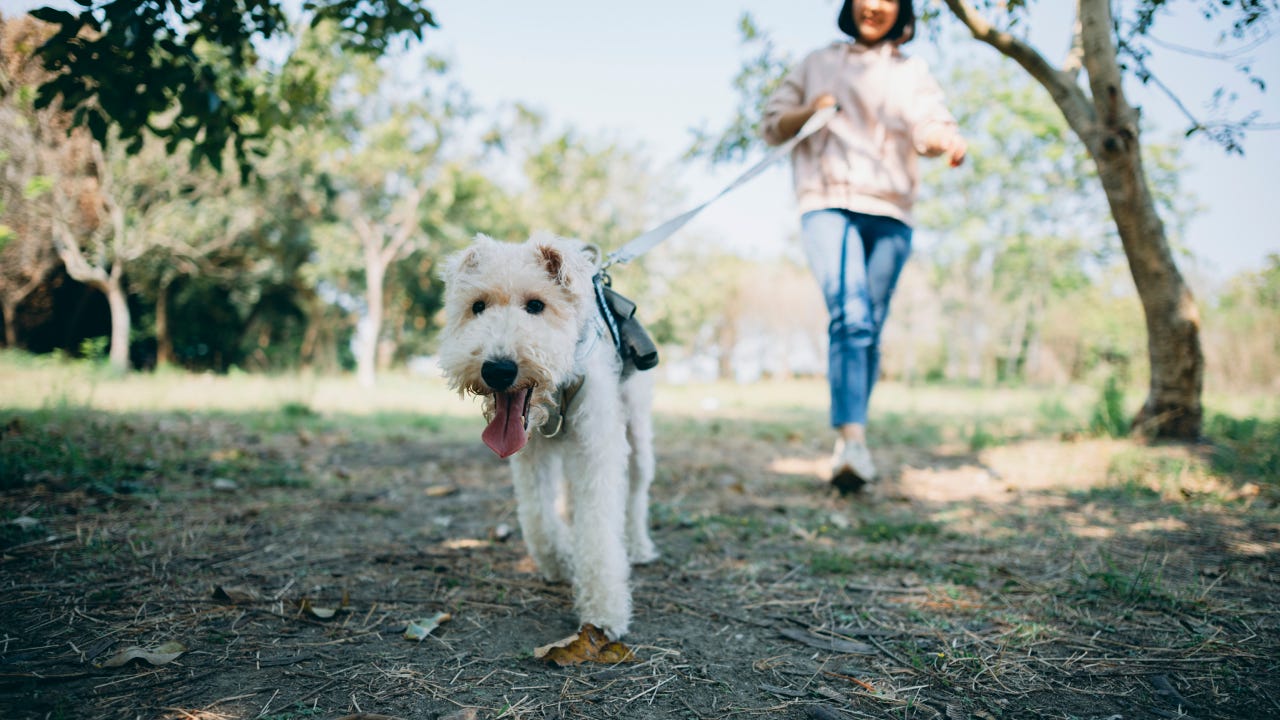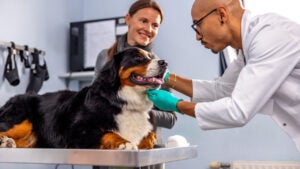What are pet insurance waiting periods?

Key takeaways
- Most pet insurance companies require a waiting period before coverage becomes active.
- Pet insurance waiting periods for accident coverage may be as little as zero to three days, while illness coverage may require a 14-day waiting period.
- Pet insurance may not cover your vet costs if your pet gets sick during the waiting period or has a pre-existing condition.
- Some pet insurance companies offer to waive the waiting period under certain conditions, like previous coverage or clean medical history.
Pet insurance can help you save on high vet bills when your pet gets sick. But there’s a big catch — it may not kick in the day you purchase the policy.
Almost all pet insurance companies require a waiting period before the policy’s coverage begins. The length of the waiting period varies based on the type of coverage, the pet insurance company and your pet’s age.
To help you understand what to expect once you sign up, here’s a breakdown of how waiting periods work, how long they can last and how the coverage can impact your wallet.
What is a pet insurance waiting period?
A pet insurance waiting period is the duration between the effective date of your policy and when your coverage becomes active. It is a predetermined time set by insurance providers to prevent fraud (such as taking out a policy for an already sick pet) and to establish a baseline for coverage.
This can also be a stressful time for pet owners. Anything that happens to your pet during the waiting period, such as a broken leg or cancer diagnosis, could be considered a pre-existing condition and will not be covered.
How do waiting periods work?
Let’s say you buy pet insurance today. If the insurer requires a waiting period, it starts once you enroll. Based on your policy, your pet’s waiting period could be a few days or weeks. The pet insurance coverage becomes active at midnight on the date the waiting period is over.
If your pet gets sick, injured or has an emergency during the waiting period, your claim may be rejected. When the waiting period ends, you can submit claims for any new injuries or illnesses covered by your pet insurance plan.
If something happens to your pet before the waiting period ends, it will most likely be considered a pre-existing condition. Pre-existing conditions will not be covered, regardless of the type of pet insurance you choose.
What factors impact waiting periods?
The type of coverage, medical history and even state regulations can impact the length of your pet’s waiting period. However, there are circumstances where waiting periods can be reduced.
Waiting periods are most commonly separated into two categories: accidents and illnesses. Then, specific conditions, such as orthopedic and cruciate ligament issues, require extended waiting periods. That’s why it’s essential to read your policy’s fine print.
Here is a summary of factors that impact waiting periods:
- Condition type: Each company can set different waiting periods for different conditions. The most common types are accidents, illnesses and orthopedic or cruciate conditions, but the list can be extended to other conditions, such as hip dysplasia.
- Insurer policies: Each insurance company reserves the right to set waiting periods. The average waiting period for accidents and illnesses is 14 days. However, depending on the insurer, these periods can range from zero to 30 days.
- Pre-existing conditions: Specific conditions noted before or during the waiting period either have longer waiting periods or are excluded entirely.
- State regulations: Legal requirements may vary by state. For example, a six-month waiting period for a cruciate ligament injury in Mississippi may change to a 30-day waiting period in Washington.
- Reduced or waived waiting period: Some pet insurers offer to reduce waiting periods if you meet certain requirements, like providing medical records. The waiting period may also be waived if your pet was previously insured.
Waiting periods for top pet insurance companies
If you’re still deciding on an insurance carrier, here are some of the best pet insurance companies’ waiting periods for accidents, illnesses and orthopedic and cruciate ligament conditions.
| Company | Accidents | Illnesses | Orthopedic conditions | Cruciate ligaments |
|---|---|---|---|---|
| ASPCA | 14 days | 14 days | 14 days | 14 days |
| Embrace | None | 14 days | 6 months | 6 months |
| Figo | 1 day | 14 days | 6 months | 6 months |
| Hartville | 14 days | 14 days | 14 days | 14 days |
| Lemonade | 2 days | 14 days | 30 days | 6 months |
| Liberty Mutual | 14 days | 14 days | 14 days | 14 days |
| ManyPets | 15 days | 15 days | 15 days | 15 days |
| MetLife | None | 14 days | 14 days | 6 months |
| Nationwide | 14 days | 14 days | 12 months | 12 months |
| Pets Best | 3 days | 14 days | 14 days | 6 months |
| Progressive | 3 days | 14 days | 6 months | 6 months |
| Spot Pet | 14 days | 14 days | 14 days | 14 days |
| Trupanion | 5 days | 30 days | 30 days | 30 days |
This list of pet insurance waiting periods above is a great starting point, but they can vary by state and are always subject to change. We highly recommend researching pet insurance companies and reading through the entire policy. Coverage amounts, premiums, deductibles and other details vary by pet insurance company.
What if something happens to my pet during the waiting period?
A waiting period can be frustrating and nerve-wracking, particularly if your pet needs care or has an emergency. Luckily, you have some options if you’re looking for ways to avoid waiting period exclusions or mitigate hefty vet bills during that period. Here are a few steps you can take during the waiting period.
Plan ahead
One way to avoid a lengthy waiting period is to purchase pet insurance while your pet is young and healthy. This is especially helpful if your pet’s breed is prone to developing certain hereditary or congenital conditions.
For example, labrador retrievers are prone to developing hip dysplasia later in life. So, if you insure your dog before they develop the condition, hip dysplasia treatment may be covered in your policy.
Maintain regular checkups
Prevention is better (and cheaper) than a cure. Keep up with routine vet visits to monitor your pet’s health and potentially catch issues early.
For example, regular dental checkups are recommended by veterinarians, but many pet owners skip this step. It turns out dental issues can devastate your pet’s health. Routine checkups and descaling can help keep your furbaby’s pearly whites in good condition.
Save for emergencies
Are you worried something could happen to your pet during the waiting period? Set some money aside to pay for out-of-pocket costs that might arise while you wait for coverage to kick in. A pet savings account can help you cover these costs and others.
If there’s a serious emergency wrong during the waiting period and you don’t have the money to cover the bills, you can look into whether a pet loan is an option.
Waived or reduced waiting period options
Truly instant coverage with no waiting period is rare in pet insurance, but exceptions exist. Some insurers may waive waiting periods if you can show proof that your pet was previously enrolled in another policy without a gap in coverage or within 24 hours of enrolling in a new policy.
Pet insurance companies may also reduce wait times based on your pet’s medical history and veterinary records. If your insurance company offers, you can also pay for preventive coverage during the waiting period.
The bottom line
Whether you’ve just brought home a healthy puppy or kitten or you have a senior pet that’s becoming a frequent visitor at your vet’s office, pet insurance can be a huge financial safety net. It’s also best to enroll early to start the waiting period clock and maximize coverage.
If you are considering pet insurance, being aware of the waiting period and understanding how coverage varies between health conditions and companies ensures your pet gets the treatment they need when they need it.
Frequently asked questions
You may also like

How direct pay works with pet insurance

Does pet insurance cover medication?

What causes pet insurance premiums to go up over time?

What does pet insurance cover?


